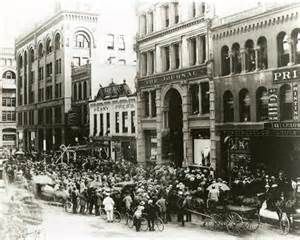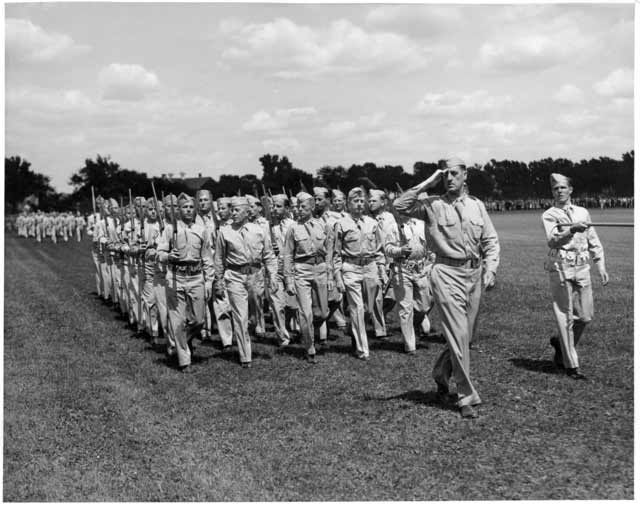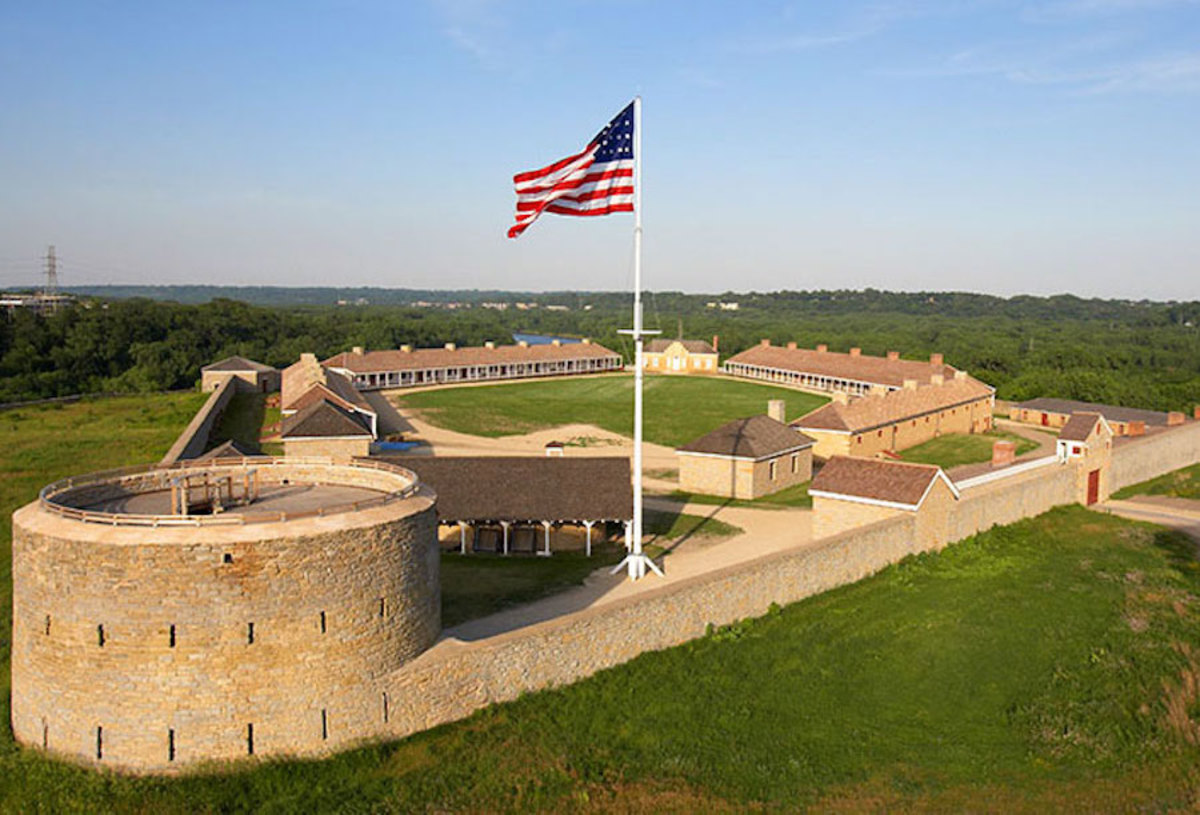The history of Minnesota was once point of many conflicts and dominance in its region, in its history the land was occupied by many nations from the Spanish, French and the English. Forts and military bases were built and settled there, and it was also considered territory under the united states. But Minnesota was fortunate to be a state and being part of the United States Union in 1858 and participating in the American Civil War. Minnesota didn’t only participated in the American civil war, just three years after of its state hood, Minnesota was involved one of the most deadly wars in its history is the Dakota war in 1862. It was a horrendous conflict that happened between the United States and the Dakotan’s. Minnesota did have strong development in the 1900s like the improvement of agricultural, new infrastructures and etc. In the late 1920s when the stock market crashed, Minnesota did have an impact, but Minnesota did improve there productivity in there businesses at that time. One of the most notable and historical places in Minnesota is Fort Snelling, because it was base where it defended and kept the British occupiers away and it was also once when Minnesotans sign up to join the United States armed forces during WWII and also a training camp for the soldiers until it stopped after WWII.

On May 11, 1858, Minnesota became the country’s 32nd state and admitted into the Union. Minnesota had the toughest journey in proclaiming itself a state, because, during that time Minnesota was under France, Spain, Great Britain, and the United States. Minnesota was once part of the United States, the land became part of 9 territories which are the Northwest, Indiana, Illinois, Michigan, Wisconsin, Louisiana, Missouri, Iowa, and Minnesota.
The Dakota conflict By 1862, the Dakota were packed into a little reservation along the Minnesota River. Times were had and Indian families hungry. At the point when the U.S. government broke its guarantees, a portion of the Dakota did battle against the white farmers and towns. Numerous Dakota did not participate, however, the battling kept going a month and a half and numerous individuals on the two sides were killed or fled Minnesota. A short time later the government drove the greater part Dakota away from Minnesota. The Anishinabe remained in northern Minnesota and were not engaged with the war.
The Dakota who stayed and the individuals who in the long run returned have shaped four communities in southern Minnesota. There are seven Anishinabe Indian reservations in northern Minnesota. Huge numbers of the Indian individuals and their families who moved to the urban communities after World War II have kept on living there. Wherever they live, Minnesota’s Indians are keeping up their social and cultural characters. A substantial number of settlers came to Minnesota starting during the 1830s to work in lumbering and cultivating. They were for the most part from the eastern United States, Canada, and northern Europe.
By 1900, the joined aggregate of Scandinavians from Norway, Sweden, and Denmark outnumbered those from any single province. Afterward, as urban communities and new enterprises developed, people came additionally from eastern and southern Europe. Finland, Yugoslavia, and Italy sent numerous workers to Minnesota mines and production lines. In 1900, about a portion of all Minnesotans were of German ancestry.
The Great Depression had many effects on the state of Minnesota, with cutbacks on the Iron Range and dry season in the Great Plains from 1931 through 1936. While the Depression had a few causes, one most applicable to Minnesota was that United States organizations or businesses during the 1920s had improved their productivity through institutionalizing production techniques or methods and disposing of waste. the owners of the businesses were receiving the rewards of this expansion in profitability, yet they were not imparting it to their workers on account of the shortcoming of composed work, nor were they offering it to the general public in the form of lowered prices. Rather, the godsend went to investors. The inevitable outcome was that purchasers could never again afford the goods that factories were producing.
At the point when the United States entered World War II in December 1941, Fort Snelling turned into the acceptance point for in excess of 300,000 people who joined the military. At its height in 1942, the Reception Center was equipped for preparing around 800 selects every day. Volunteers were sworn into the US military, got restorative examinations and inoculations, were arranged and allocated to a unit, and were issued basic hardware. Most selects remained at Fort Snelling for just a brief span before they were transferred to other military posts on start their basic training.

After 1944 the fort was the place of the Military Intelligence Service Language School, where Nisei (Japanese Americans born) Japanese Americans learned Japanese, Korean, and Chinese language and culture in anticipation of abroad administration as mediators, investigators, and insight workers. These soldiers assumed a significant job after the end of the war during the occupation of Japan.
At the point when World War II ended in 1945, in excess of 7,800 Minnesotans had lost their lives while serving in the military. Fort Snelling was formally decommissioned as an active armed forces post in 1946. The US military still keeps up a presence on the site, with certain buildings and properties being utilized by reservists from the US Army, Navy, Marines, and Air Force.
Fort Snelling is an important and significant point of Minnesota’s history. Its development started during the 1820s with the plan that it would be both a fort and an exchanging post, in spite of the fact that the latter never came to pass. The timing was affected by the recent conclusion of the War of 1812 and the U.S. government’s desire to stop any British impact in the Northwest Territory.
After opening under the name Fort St. Anthony the change to Fort Snelling was made later to recognize Josiah Snelling’s oversight of the development, the fort played numerous roles such as to supervise the area’s growing fur exchange, shield the British from descending south from Canada, remain peaceful limits among the Native American nations, and to oversee European immigration until more land could be procured from the Native Americans.
the fort was once decommissioned. The grounds and structures fell into a state of not being used. In any case, in 1960, the site was proclaimed a National Historic Landmark. This kept it safe from almost certain destruction from a planned highway. In 1965, the site was turned over to the Minnesota Historical Society, and subsidizing was appropriated to start reestablishing the site. Archeologists made various discoveries of items and structures, and the fort was reestablished with a close eye to authentic historical detail.

Today the site fills in as a bit of living history, open to guests amid the spring and summer months. There are visit occasions that spotlight different purposes of its course of events, just as active programs and kids’ camps. The reclamation brought the structures and grounds to a close of what it resembled during the 1820s, and give a great feeling of life of something so long ago.
In conclusion the history of Minnesota had a great and not so great historical point. Minnesota had occupiers occupied the land, there were struggles to be an official state to the United States, wars and conflict broke out in the land, but there were some great times in minnesota like improved agricultural, innovations and great infrastructures. Minnesota is considered an important state for development and economy to the country. Minnesota till this day holds many historical sites and the most important one Fort Snelling.
work cited
“Cayuse Canyon, LLC.” The US50 – A Guide to the Fifty States,
http://www.theus50.com/minnesota/history.php.
“Fort Snelling: An Important Point of Minnesota History.” Life In Minnesota, 11 May 2017, http://www.lifeinminnesota.com/fort-snelling-an-important-point-of-minnesota-history/.
“Minnesota’s Path to Statehood.” Puerto Rico 51st, 10 Jan. 2018, http://www.pr51st.com/minnesotas-path-statehood/.
“The Depression.” Minnesota Historical Society, http://www.mnhs.org/mgg/depression.“World War II (1941-1945).” Minnesota Historical Society, http://www.mnhs.org/fortsnelling/learn/military-history/world-war-ii.